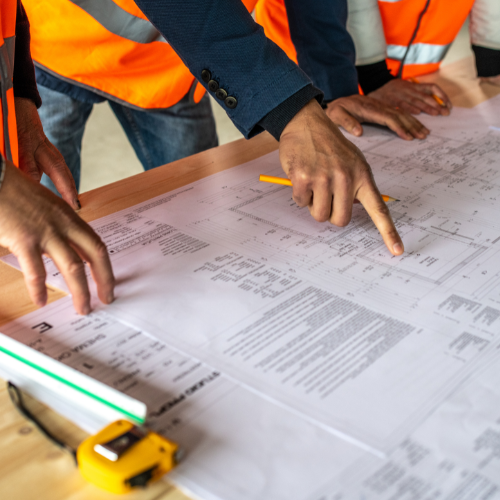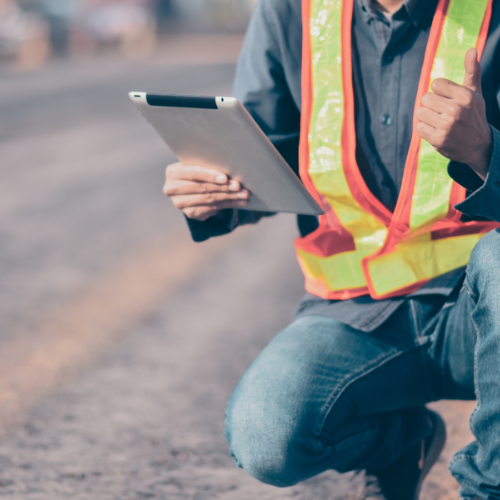
Regardless of the industry they operate in, businesses of all kinds have to contend with a variety of workplace hazards—hazards that jeopardize the health and well-being of their employees. Whether it be exposures related to slips, trips, falls, potentially dangerous equipment, poor housekeeping practices, hazardous material usage or similar occupational risks, organizations have a duty to protect workers from harm.
While there are many approaches to addressing on-the-job hazards, health and safety bodies—such as the National Institute for Occupational Safety and Health (NIOSH), and the Occupational Safety and Health Administration (OSHA)—recommend using the hierarchy of controls. This article will examine the hierarchy of controls, detailing what it is and how it can be used to reduce or even eliminate workplace hazards.
What Is the Hierarchy of Controls?
Put simply, the hierarchy of controls is a widely accepted system for minimizing or eliminating employee exposure to particular hazards. Specifically, the hierarchy of controls examines hazard control methodologies from a tiered perspective, ranking them from most effective to least effective as follows:
- Elimination—Elimination refers to physically removing a specific hazard from your workplace altogether. This is one of the most effective ways to manage on-the-job risks and involves altering policies, procedures, materials, parts, products, equipment or tools you use to help workers perform their duties safely. For example, imagine that your business requires the use of a hazardous chemical as part of its daily operations. One elimination strategy could involve halting the use of the chemical altogether. Because the chemical is no longer used in your workplace, it poses no threat to your employees moving forward.
- Substitution—Substitution refers to replacing materials, processes or equipment with a less hazardous equivalent. This is typically used when elimination is not possible. Using the same chemical hazard example outlined above, substitution could involve swapping the chemical used in the workplace for a less toxic one that’s just as effective.
- Engineering controls—Engineering controls refer to denying access to a specific hazard. This can include redesigning equipment or work processes to reduce the frequency of dangerous tasks, or isolating a hazard altogether by installing screens or barriers. Using our chemical hazard example, engineering controls could involve installing a ventilation system.
- Administrative controls—Administrative controls refer to changing the way your employees work to limit specific hazards. These are implemented when engineering controls can’t be used and relate to establishing new processes and procedures for safe work. Administrative controls could include altering policies, posting signage and training employees. Under our chemical hazard example, administrative controls might involve limiting an employee’s exposure to the chemical in question.
- Personal protective equipment (PPE)—In general, providing employees with PPE (e.g., respirators) is considered to be the least effective hazard control method. Still, PPE plays an important role in worker safety and can protect workers from common workplace hazards, like noise, cuts and head injuries. PPE is inexpensive and used frequently where hazards can’t be addressed using other controls. For our chemical hazard example, PPE could include the use of a respirator.
Using the Hierarchy of Controls to Address Workplace Risks
While the hierarchy of controls is critical to safeguarding employees, it’s only effective if you use it as part of a larger, systematic approach to eliminating workplace hazards. To leverage the hierarchy of controls effectively—as well as minimize on-the-job risks—consider the following steps below for addressing workplace hazards.
Identify Hazards and Control Options
Every workplace hazard is different and requires a unique approach. To evaluate your control options, you must first determine the types of hazards that are present in your workplace. This can be accomplished by:
- Performing a risk assessment.
- Conducting periodic inspections of the workplace to identify new or recurring hazards.
- Investigating injuries, illnesses, incidents and near misses to determine underlying hazards as well as their causes.
- Soliciting input from workers who have knowledge of the facility, equipment and work processes.
After identifying the hazards present in your workplace, you can then evaluate your control options by collecting, organizing and reviewing the following sources of hazard information:
- OSHA standards and guidance
- NIOSH publications
- Literature from equipment manufacturers (for equipment-related risks)
- Engineering reports
Additionally, investigating control measures used by other organizations can help you assess your options and determine whether or not they might be effective in your own workplace.
Select Controls
After reviewing hazards and potential risk mitigation strategies, employers should select the most feasible, effective and permanent control option. This can be accomplished by selecting controls in accordance with the hierarchy of controls.
This could mean eliminating or substituting hazards where possible. If elimination and substitution can’t be accomplished, firms should prioritize controls based on the hierarchy of controls, emphasizing engineering and administrative controls before the use of PPE.
If no single method found on the hierarchy of controls fully protects workers, consider using a combination of methods (e.g., using administrative controls and PPE).
When selecting controls, businesses should avoid ones that may directly or indirectly introduce new hazards. Additionally, before selecting any control options, be sure to solicit input from your workers. Doing so can help you evaluate the feasibility and effectiveness of your control methods.
For complex hazards, you should seek the advice of safety and health experts.
Develop a Hazard Control Plan
Developing a hazard control plan is crucial, as it can help you outline and communicate how your selected hazard controls will be implemented organizationally. An effective plan will:
- List workplace hazards, organizing them based on priority (e.g., listing the most dangerous hazards first).
- Take interim controls into account. These may be necessary if you need to put temporary precautions in place while you develop and implement long-term controls.
- Establish a target completion date for implanting controls. Your plan should also establish processes that allow you to track your hazard control implementation progress.
- Allow you to verify the effectiveness of controls once they’re implemented.
Your hazard control plan should also include provisions to protect workers during emergencies. Depending on your operations, these could include fires, explosions, chemical releases, hazardous material spills and unplanned equipment shutdowns, among others.
Implement Selected Controls
Once you have identified hazard prevention and control measures, you should implement them according to your hazard control plan. In general, hazards should be addressed based on their severity and potential to harm workers.
Ensure Existing Controls Are Effective
To ensure the control measures you have implemented are effective, you should ask yourself the following questions:
- Have all control measures been implemented according to the hazard control plan?
- Have engineering controls been properly installed and tested?
- Have employees been appropriately trained on the control methods?
- Do employees understand the controls (e.g., engineering controls, safe work practices and PPE usage requirements)?
- Do employees follow the control methods correctly and consistently?
Additionally, it’s important to conduct regular inspections to confirm that any controls you’ve implemented are working as designed. If the controls aren’t working as expected, you may need to modify them. Be sure to solicit employee feedback on workplace controls, addressing any worker concerns that arise.
Continued Safety
Addressing workplace hazards takes continued commitment and involves working alongside employees to find the best solutions to common exposures. To help you on this journey, Seubert is here for you as a trusted advisor—one that can provide helpful resources for many of your loss control and employee safety needs. Contact us today if you are interested in completing a SHAPE Risk Assessment of your organization.

4 Major Construction Hazards
Construction workers face many risks, but falls, struck-by, caught-in/between hazards, and electrocutions are the leading

CVSA Announces 2025 Roadcheck Focus
CVSA’s 2025 International Roadcheck is set for May 13-15, focusing on CMV and driver safety

Employee Spotlight: Luke Billman
Please join us in welcoming Luke Billman to the Seubert Team! Luke joins Seubert’s Commercial
